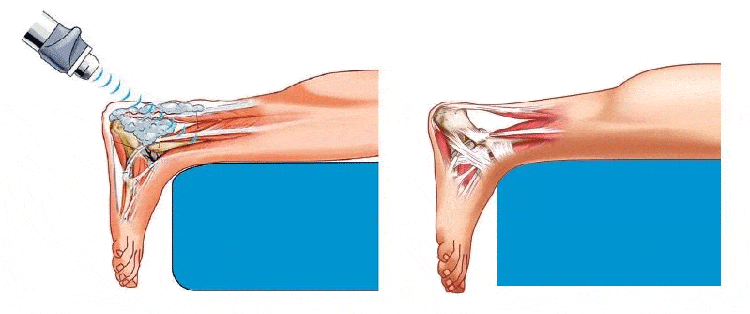It’s a lovely Thursday at Pro Fusion Rehab, with a familiar zapping noise crackling from the back of the clinic as a patient undergoes Extracorporeal Shockwave Therapy or ESWT for a shoulder condition. The technology is actually pretty astounding; other clinical practices use shockwave therapy to break down the calcium in kidney stones so patients can pass them easier. Shockwave therapy has become a saving grace for chronic pain cases and as a last resort when all other modalities fail. More powerful than electrotherapy and ultrasound, shockwave therapy produces a pressurized, acoustic current strong enough to break the sound barrier. The current is transmitted through the body to stimulate healing and regeneration deep in the affected area.
To help demonstrate the effectiveness of shockwave, we reached out to a colleague for permissions to show you how it all works. On the Youtube Video, Sam is using radial shock wave handpiece made by GZ LONGEST, on an egg to show how the current affects calcium deposits. Picture shockwave handpiece generates energy and current; as the current passes like a ripple and builds its shape, it breaks on the surface, dissipating the charge into smaller patterns of reverberation. This reverberation will cause the breakdown of the bad calcium in your tissue, and the stimulation of the cells responsible for regenerating soft tissues and bones. As you can see on the egg in the video, the shell breaks apart in tiny pieces, not big chunks, in a gradual but powerful process.
Shockwave is a great solution for stiff scar tissue, ligaments and connective tissue, frozen shoulder, plantar fasciitis, and other painful conditions with deep-rooted sources. Particularly useful for the management of chronic pain conditions, shockwave’s success rate is upwards of 80%, and if you can get past the sound effects and a little discomfort, the gains are out of this world. Despite the power of the machine, the treatment itself is non-invasive, safe, and generally not painful. Sensations are usually described as feeling more like pressure than an actual pain; remember, we will always make adjustments if the sensation is unbearable. Shockwave sessions usually last about 3 to 8 minutes depending on the condition treated. With a quick recovery time, most patients notice immediate change following the appointment. Talk to your physiotherapist to see if shockwave is for you.
